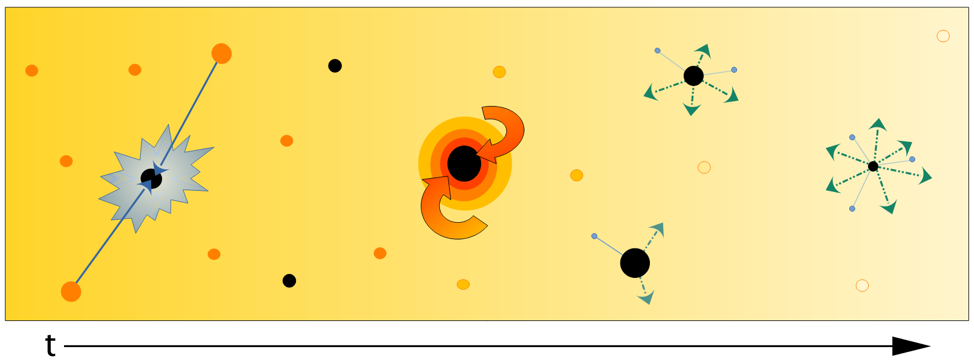In a recent study a group of researchers including Prof. Aaron Vincent of Queen’s University, Queen’s Physics PhD candidate Avi Friedlander, former Queen’s Physics postdocs Dr. Sarah Schon and Dr. Ningqiang Song, and Prof Katie Mack of NCSU & Perimeter studied the impact of black holes if they are created in the earliest stages of the universe. About 85% of the matter in the universe, called dark matter, cannot be explained by any previously known particle. One possibility is that dark matter is made up of many microscopic black holes which formed in the early universe. Models of gravity with additional compact spatial dimensions predict that energetic collisions between particles in the very early universe would produce these microscopic black holes. These would then grow to the mass of large asteroids.
The research group studied the impact black holes would have on different evolutionary stages of the Universe and were able to set upper limits on how many microscopic black holes could exist. Using these observations, they found that the black holes produced in theories with two additional dimensions could explain all of the dark matter observed today.
This paper has been submitted for peer-review to Physics Review D and was released as a pre-print on a free public archive on January 27, 2022.
See arxiv.org/abs/2201.11761
 Queen's 2015 Nobel Prize in Physics
Queen's 2015 Nobel Prize in Physics


